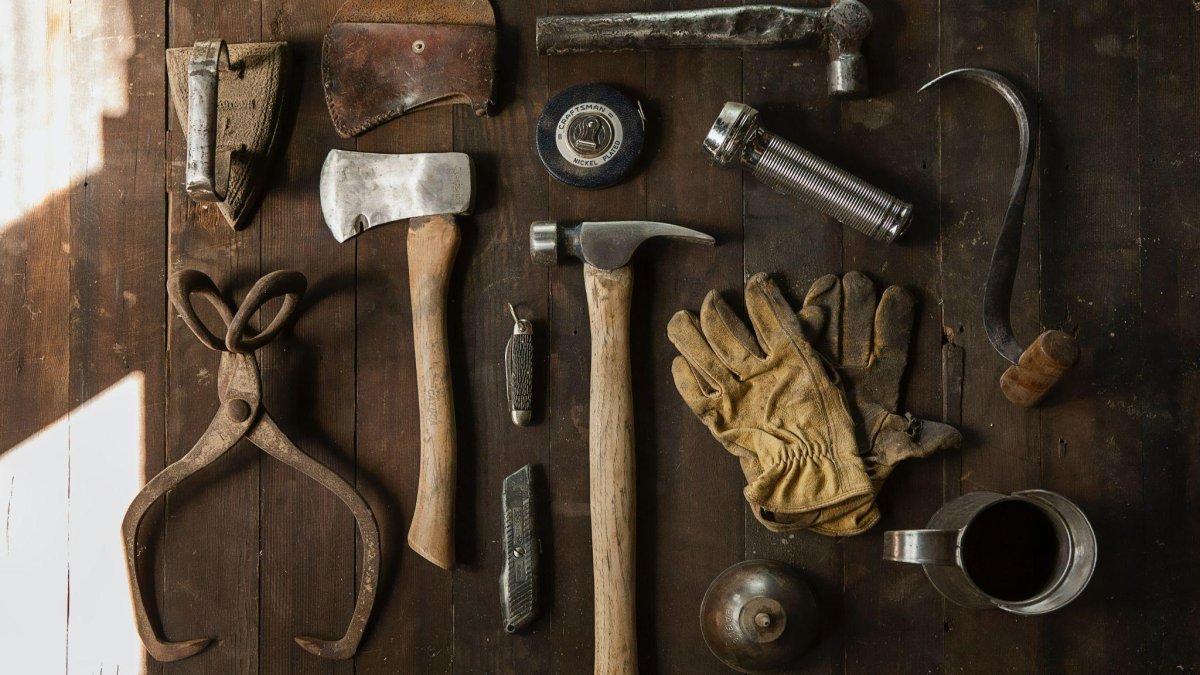
Whether you’ve been a homeowner for a long time, rent, or just bought a new place, the possibility of needing to do a repair will come up sooner or later. It’s just part of the process. Homes—and the various parts of them exposed to the weather or used every day—require maintenance from time to time.
That means fixing a loose board, repairing a sink, doing some painting, or whatever else might be needed at various times throughout your life. To handle those simple repairs, having a toolbox containing the necessary tools is essential. Today, we’ll discuss the need for a toolbox at home, help you discover which tools you need, and tell you how to take care of them correctly. Let’s dive right in!
Why You Need A Toolbox At Home
Although most things around the house are built to last, there are going to be times when making a repair or maintaining something around your home becomes necessary. These repairs will require certain tools. Whether it’s fixing a leaky faucet, patching a hole in your wall (with spackle or joint compound), or just tightening some screws, you’ll be glad you have the right tools on hand.
Every household should have a toolbox dedicated to storing and organizing the tools they need for any possible job, repair, and household task. But tools aren’t just for home repairs, oh no! They’re perfect for those of us with a DIY spirit (and let’s be honest, you’ve probably wanted to build a coffee table or gaming cabinet at some point in your life, right?). They can also provide a sense of safety knowing you have the tools you need in the event of an emergency.
Essential Tools For The Home
Most household repairs are simple enough and use only basic tools, so putting together a simple toolbox with some essential tools is good enough. But what are these essential tools?
Well, common sense dictates that a screwdriver, wrench, and hammer are probably pretty important here. But what do the experts think? According to Bob Vila, you definitely need these items (shocking, we know). But you should also have a tape measure, level, and combination square (to help you with 90-degree angles). In the course of doing basic repairs, accurate measurements can make a big difference.
Other tools experts typically recommend are hand saws, drills, various clamps, and a sander/sandpaper. On top of that, be sure to keep an array of sealants/caulk, a caulking gun, and some hardware—screws, nails, bolts, washers, rivets, and so on—just in case you need them.
Storage For Tools
Now that you know which tools to use, it’s time to figure out tool storage. Depending on the size of your home, you may or may not have room for a large toolbox. If you have a workshop, shed, or garage, you can use those for storing power tools and any tools you might not need right away at home. For most of us, however, a simple toolbox containing the essentials is ideal. You can store it in the cabinet, by the door, or in a conveniently located place in your home.
If you have a workshop, you might consider setting up a pegboard-and-hooks system to help keep things organized. If you have a small toolbox, the best place to store it is on a shelf or in an out-of-the-way place, like under your bed or in a closet. Consider also acquiring an organizer to help keep everything easier to find when you need it.
Maintaining Your Tools
Tools aren’t useful to anyone if they aren’t being maintained. High-quality, well-made hand tools will last a long time if you use them properly and do your best to keep them in good working condition. Some tools require regular tightening or lubrication. Others need blade replacements or sharpening. You can easily sharpen these tools at home with the right accessories.
Power tools require some extra care and maintenance as well. Be sure to consult the manufacturer’s instructions for care and maintenance. Then, follow it! Keeping your tools in good condition will help you use them for a long time and avoid broken or damaged pieces. A little bit of care saves time, money, energy, and heartache when emergencies occur and you need your tools the most.
Tool Safety

As with operating and using any type of tool, safety is critical. Tool safety comes down to a lot of common sense, some personal protective gear, and a little bit of training. It’s a smart move to wear safety glasses and gloves when using power tools. Even if you think you’re the world’s best chainsaw operator, there’s always the chance something could go horribly wrong while operating the tool.
When using saws and other types of tools, ear protection is also sometimes necessary. The best way to stay safe is by being aware of your surroundings. Don’t point your tools toward others, be mindful of anyone in the vicinity, and take care to use them properly. Safety is essential for home repairs and avoiding injury/damage is crucial to keeping your home in good repair.
Gray Williams
Related posts
Stay connected
Today's pick
- Things to Remember While Designing Your Custom Modular Kitchen in GurgaonGurgaon now known as Gurugram is the second largest city in the state of Haryana and is a reflectiossn of an ideal modern city with futuristic goals. Witnessing rapid urbanization, it has also emerged as a hub for contemporary homes, with homeowners seeking innovative and... The post Things to Remember While Designing Your Custom Modular […]

